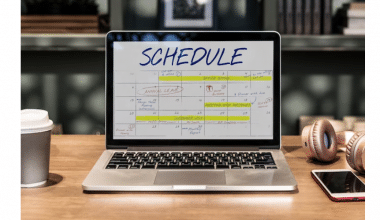Demand planning and supply planning are independent processes, yet for firms to succeed, they must be well-versed in both. Supply chain businesses can reliably forecast future demand thanks to demand planning. Organizations can better control their output to guarantee that client needs are met by giving both demand planning and supply planning priority. In this post, we will be talking about the difference between supply chain and demand planning.
Supply Planning vs Demand Planning
Supply chain organizations use demand planning to estimate and forecast how their demand will look at specified intervals or based on certain occurrences, in order to manage inventory and guarantee that there is adequate supply to fulfill the demand. It also enables them to plan ahead for inventory decisions and manage their operations in a way that will ultimately support their cash flow. If a business expects higher demand around the holidays, decision-makers might increase inventory to satisfy customers and avoid overstocking or understocking.
What Is Supply Planning: Supply Planning vs Demand Planning
The supply planning process includes demand projection analysis, stock level comparison, and supply chain coordination. It determines how much must be produced, what supplies are needed, and when they must be bought.
The basis of effective supply chain management is frequently supply planning, also referred to as raw material or material planning. A supply chain planning strategy aims to minimize supply chain costs and risks while ensuring that the proper product is available at the appropriate time and location. The goal of inventory management is to match the expected sales volume.
WHAT IS THE PURPOSE OF SUPPLY PLANNING?
To make sure a company has adequate raw materials to meet manufacturing demands, supply planning is a crucial job. However, stockpiling raw materials wastes money that could be used to expand other parts of the company. An effective supply plan aids a business in finding the ideal middle ground between these two extremes. It minimizes excess inventory and related costs while ensuring there is sufficient inventory to fulfill client demand. A supply plan integrates production plans and raw material procurement to form a company’s supply chain.
THE SUPPLY PLANNING PROCESS
Coordination of the flow of items along a supply chain, from raw materials to completed goods, is a task of supply chain planning. The steps in the supply planning process are listed below.
#1. FORECAST DEMAND
The initial phase in the process is predicting product demand. In order to forecast future product demand, historical sales data, and market trends must be analyzed. Sales volume, historical information, consumer surveys, and historical trends can all be useful to determine demand. Sales projections are effective because they demonstrate how the market’s demand will fluctuate over the course of the product’s life.
#2. DETERMINE SOURCES OF SUPPLY
Finding the sources needed to satisfy that need comes next once the predicted demand is understood. This procedure entails choosing suppliers, settling on a contract, and deciding on inventory levels. You want to regulate cash flow, stay within budget, and create a supply plan that supports your business strategy.
#3. SCHEDULE PRODUCTION
The business develops a production plan based on the availability of the items required for production based on the forecasted demand and the sources of supply. Production scheduling has an impact on the sequence in which raw materials are useful and completed goods are produced. In order to arrange plant production runs, requires planning production schedules to fulfill demand.
#4. PLAN TRANSPORTATION
Make a plan for the delivery of products from the supplier to the producer and from the manufacturer to the consumer. To do this, it is necessary to choose carriers, work with several carriers in coordination, and choose the most effective modes and routes to send the goods where it has to go at the right time.
#5. MANAGE INVENTORY
Allocating the space and other storage containers needed for materials at a distribution center is a part of inventory management. It chooses the best inventory levels to keep in order to meet production deadlines.
#6. MONITOR AND ADJUST THE PLAN
The supply chain planning process is ongoing, and if new information becomes available or market conditions change, the strategy may need to be modified. To make sure the supply plan stays effective, evaluate and adjust it frequently.
What Is Demand Planning: Supply Planning vs Demand Planning
Businesses utilize demand planning, a cross-functional approach, to fulfill consumer demand without disrupting the supply chain or inventory management. The combination of product portfolio management, enterprise resource planning, marketing, and sales allows for the continuous planning of demand. The demand forecast for your product must be based on both internal and external business data because external factors like changes in the labor force, the economy, natural disasters, international crises, and more can have an impact on demand planning.
Why Is Demand Planning Important?
Although finding a balance between supply and demand is difficult, the benefits are great. Demand planning may improve your company’s profitability, customer satisfaction, and production planning, inventory management, and supply chain operations efficiency. Making an accurate demand forecast and developing a demand plan based on it will enable all of this to be accomplished.
Key Elements of Demand Planning
Demand planning is a challenging but doable process. Here are a few components that interact to support you in striking a balance between supply and demand:
- Data gathering and modeling: Compile data from internal and external sources to contextualize demand.
- Statistical forecasting: You can produce demand projections based on your sales, inventory management, and capacity planning data by applying statistical analytic methodologies.
- Product portfolio management: To achieve cost economies and other strategic advantages, product portfolio management entails simultaneously managing several product lines.
- Trade promotion management (TPM): TPM describes the various actions that businesses do to raise consumer demand.
- Business analytics: To forecast demand, feed the obtained data into business intelligence programs like predictive analytics.
- Collaboration: Collaborate with your manufacturers, suppliers, sales team, and other supply chain participants to gather data that may have an impact on demand.
These factors enable you to create a demand forecast, which is a knowledgeable projection of the demand you anticipate. That further leads to the following action, which is developing a demand plan.
Methods for Demand Planning
To set up your company to satisfy client demand, you can use a variety of demand planning strategies. Here are some alternative methods you can use.
#1. Delphi Method
In order to anticipate demand using the Delphi approach, a group of cross-functional subject matter experts must come to an understanding of future market trends and potential client needs.
#2. Benchmarking
Benchmarking entails contrasting your company with the leading players in your sector. By comparing their performance indicators and operational procedures to those of comparable businesses, managers and demand planners can provide demand projections that are reasonable.
#3. Linear Regression
A statistical technique called linear regression uses a variety of characteristics to predict future demand. Utilizing previous sales data, market and economic situations, and various scenarios, managers can forecast demand using this strategy.
#4. Demand Sensing
Instead of using historical data, demand sensing uses artificial intelligence and real-time data to estimate future demand based on present demand management data.
Demand Planning in Supply Chain
Demand forecasting, often known as prediction, is a procedure effective in supply chain management to make sure that products can be delivered and please customers. Striking a balance between having enough inventory to meet consumer demand without having an excess is the objective. Demand can be influenced by a wide range of variables, such as shifts in the labor force, economic changes, bad weather, natural disasters, or world crisis situations.
Why is Demand Planning Important?
Businesses lose money if clients can’t buy a product because it’s out of stock, and eventually they risk losing the customer to a rival. On the other side, holding onto a ton of unsold inventory results in unnecessary space and manufacturing costs. Demand planning enables business owners to anticipate market changes, take more proactive action, and respond quickly to client demands.
What Are the Aspects of Demand Planning?
There are many facets to demand planning, but the three main ones are as follows:
#1. Product Portfolio Management
Product portfolio management is responsible for managing the entire product lifetime, from the launch of a new product to its end-of-life planning. Thus, product lines are frequently interdependent, therefore it’s crucial to understand how new items could affect demand for other products in order to determine the overall product mix needed to increase market share.
#2. Statistical Forecasting
Advanced statistical algorithms are useful in statistical forecasting to produce supply chain forecasts using historical data. In this area, it’s crucial to assess each model’s precision, spot outliers and exclusions, and comprehend assumptions. Statistical forecasting can also be effective to evaluate seasonal fluctuations, such as the spike in Christmas shopping that businesses experience between October and December or the increase in yard equipment sales in the spring.
#3. Trade Promotion Management
Demand can be influenced by trade promotion or marketing activities, particularly in the retail sector. A trade promotion’s objective is to support a brand’s connection with a consumer, frequently through an in-store giveaway, discount, or promotion. These activities have the potential to affect consumer demand for a certain good.
The Future of Demand Planning in the Supply Chain
Supply chain and demand planning are going digital, just like any company’s requirements. The supply chain can now adjust and update estimates in real-time, allowing inventories to run more efficiently without underestimating demand, thanks to advancements in machine learning technologies.
Understanding how to use digital enterprise architectures and putting artificial intelligence and machine learning programs into practice that can help optimize a lean, agile, and data-driven approach will open up new opportunities for supply chain professionals to reduce operating costs, increase revenue, and provide a stronger competitive edge.
Demand planning may be done more quickly with a supply chain that is more integrated. Demand planning, when done correctly, can play a key role in increasing a supply chain’s profitability.
What Is the Link Between Demand and Supply Planning?
Demand planning entails predicting client demand, whereas supply planning identifies how a company will meet that need while still achieving its financial and service objectives.
Is S&Op Part of Demand Planning?
Demand, supply, and financial planning are all aligned through the sales and operations planning (S&OP) process, which is managed as part of a business’ master planning.
Is Supply Planning Difficult?
Planning is challenging due to the supply chains’ complexity.
Is Demand Planning Part of Procurement?
Demand and supply planning are equally important aspects of procurement that cooperate to guarantee the efficient flow of products and services.
What Are the Benefits of Supply and Demand Planning?
Integrated demand and supply management have seven benefits.
- Increased capacity to react to fluctuating demand.
- Enhanced value production.
- Improved internal and external cooperation…
- Better and more strategic resource allocation.
- Empowerment of the team.
- Put an emphasis on profitability.
- Increased operational effectiveness and execution.
Who Is Responsible for Demand and Supply Planning?
The demand planner’s role typically falls under that of the supply chain manager, whose function is to control demand and inventory levels.
Related Posts
- DATA STANDARDIZATION: Definition, Process & Why It Matters
- BRAND MANAGER: Duties, Salary & How to Become One
- COMMUNICATIONS DIRECTOR SALARY: 2023 Salary Guide
- ASSOCIATE PROJECT MANAGER: Job Description, Duties & Salary






